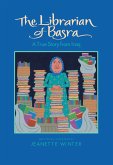On a bright autumn day, as long ago as the year 943, there was a great bustle in the Castle of Bayeux in Normandy. The hall was large and low, the roof arched, and supported on thick short columns, almost like the crypt of a Cathedral; the walls were thick, and the windows, which had no glass, were very small, set in such a depth of wall that there was a wide deep window seat, upon which the rain might beat, without reaching the interior of the room. And even if it had come in, there was nothing for it to hurt, for the walls were of rough stone, and the floor of tiles. There was a fire at each end of this great dark apartment, but there were no chimneys over the ample hearths, and the smoke curled about in thick white folds in the vaulted roof, adding to the wreaths of soot, which made the hall look still darker. The fire at the lower end was by far the largest and hottest. Great black cauldrons hung over it, and servants, both men and women, with red faces, bare and grimed arms, and long iron hooks, or pots and pans, were busied around it. At the other end, which was raised about three steps above the floor of the hall, other servants were engaged. Two young maidens were strewing fresh rushes on the floor; some men were setting up a long table of rough boards, supported on trestles, and then ranging upon it silver cups, drinking horns, and wooden trenchers. Benches were placed to receive most of the guests, but in the middle, at the place of honour, was a high chair with very thick crossing legs, and the arms curiously carved with lions’ faces and claws; a clumsy wooden footstool was set in front, and the silver drinking-cup on the table was of far more beautiful workmanship than the others, richly chased with vine leaves and grapes, and figures of little boys with goats’ legs. If that cup could have told its story, it would have been a strange one, for it had been made long since, in the old Roman times, and been carried off from Italy by some Northman pirate...
Bitte wählen Sie Ihr Anliegen aus.
Rechnungen
Retourenschein anfordern
Bestellstatus
Storno









